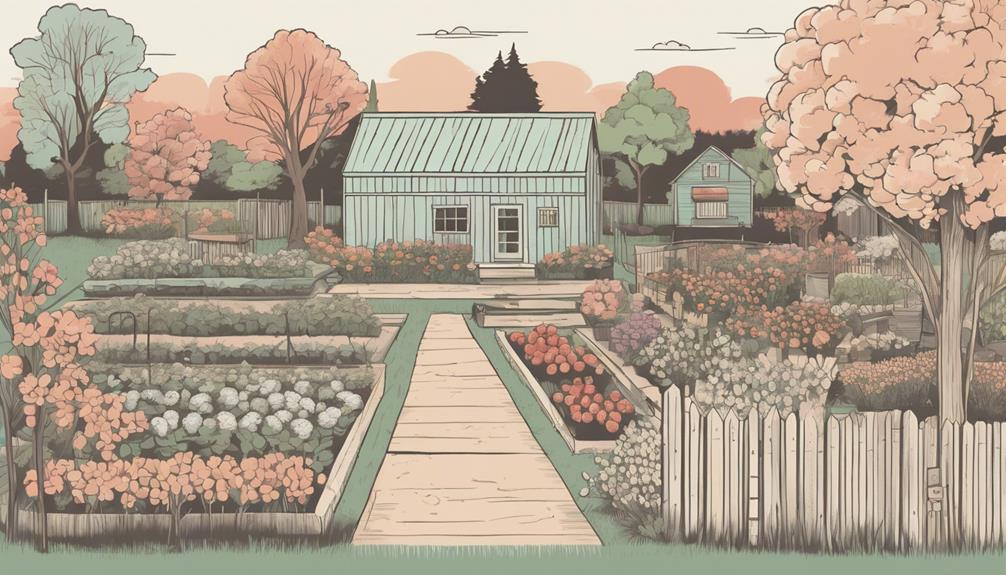How To Become More Self-Sufficient Without Starting a Full-Blown Farm…
Want to start preserving your harvest, making your own soap, or building a backyard root cellar — but not sure where to begin? “Homesteading Advice” gives you instant lifetime access to 35+ practical homesteading books on food preservation, veggie gardening, DIY natural cleaning products (save over $250 per year with this skill alone), brewing, off-grid energy, and a whole lot more…
Click Here To Check It Out Now!
“I’m planning to start a backyard farm and want to create a site plan to maximize my limited space. Could you provide detailed advice on how to approach this project? I live in a suburban area and aim to grow vegetables and perhaps raise a few chickens. Any tips on layout, organization, and other relevant factors would be highly appreciated.” Thanks, Karen, Denver, USA.
How Do I Create A Site Plan For My Backyard Farm?
Creating a site plan for your backyard farm is a foundational step that helps bring your vision to life. It ensures efficient use of space, optimal growing conditions, and ease of maintenance. Karen, let’s walk through the essential steps and considerations to craft a practical and productive site plan for your backyard farm in Denver.
Assess Your Space
Start with a detailed assessment of your backyard. Measure the total area, noting dimensions and any existing features like trees, structures, and shaded spots. This helps identify the scope for cultivation and livestock keeping.
- Note sunlight patterns: Observe where sunlight falls throughout the day. Most veggies need at least 6 hours of sunlight, so knowing your sunny spots is crucial.
- Check soil quality: Test your soil to determine its pH and nutrient levels. This helps in amending the soil for optimal plant growth.
- Identify water sources: Locate existing water sources and plan for accessible irrigation systems. Consider rain barrels or drip irrigation to conserve water.
Plan Your Layout
The layout is all about organizing space efficiently. Consider these elements:
Vegetable Beds
Raised beds or in-ground beds? Both have pros and cons, and your choice may depend on soil conditions and personal preference. Raised beds warm up faster in the spring and have better drainage, but they may require more initial investment.
Livestock Area
If you’re planning to raise chickens like Karen, allocate a safe and separate area for them. Here are some key points:
- Coop placement: Ensure the coop is well-ventilated and predator-proof.
- Run space: Allocate enough space for the chickens to roam. Around 2-3 square feet per bird inside the coop and 8-10 square feet per bird in the run are ideal.
Paths and Access
Clear and accessible paths make maintenance easier. Designate main paths for easy movement and space between beds for comfortable access.
- Mulch paths: Use mulch for paths to keep them weed-free and prevent muddy walkways.
- Tool storage: Plan a convenient spot for tools to minimize downtime during gardening.
Selecting Varieties and Placement
Choosing the right plants and placing them wisely can make a big difference.
- Companion planting: Group plants that benefit each other. For example, tomatoes grow well with basil and carrots.
- Crop rotation: Rotate plant families yearly to prevent soil depletion and reduce pest issues.
- Space-efficient plants: Grow vertical with trellises for plants like cucumbers and beans, saving ground space for other crops.
Infrastructure Considerations
Investing in the right infrastructure can enhance the productivity and longevity of your backyard farm.
- Compost area: A compost bin or pile turns kitchen scraps and garden waste into gold for your plants.
- Shade structures: In hotter climates, providing shade for certain plants can prevent heat stress.
- Water systems: Automated drip irrigation saves time and ensures consistent watering.
Environmental Impact and Sustainability
Adopting sustainable practices can improve the health of your garden and the planet.
- Water conservation: Use rainwater harvesting and mulching to reduce water usage.
- Organic practices: Avoid synthetic pesticides and fertilizers. Opt for compost, manure, and natural pest control methods.
- Wildlife habitat: Grow plants that attract beneficial insects like bees and butterflies to promote biodiversity.
Creating a Visual Site Plan
Once all the considerations are mapped out in your head, it’s time to put them on paper:
- Sketch the layout: Draw a rough sketch of your yard, including fixed features like trees and buildings. Mark sunny and shaded areas.
- Plot plant and animal zones: Designate areas for vegetable beds, livestock, compost bins, and paths.
- Use graph paper: If possible, use graph paper to create a more accurate scale drawing. This helps visualize space and fit better.
- Online tools: Utilize online garden planning tools that help with layout and plant spacing.
Create multiple drafts and iterate until the plan meets your goals and feels right.
Final Thoughts…
Karen, thank you for reaching out with your question. It’s great to see your enthusiasm for starting a backyard farm in Denver. Setting up a site plan takes some effort, but it’s well worth the time. Remember to consider sunlight, soil, water, and sustainability while planning your layout. By organizing your space thoughtfully, you’ll set a strong foundation for a fruitful and enjoyable backyard farm. Happy gardening!

